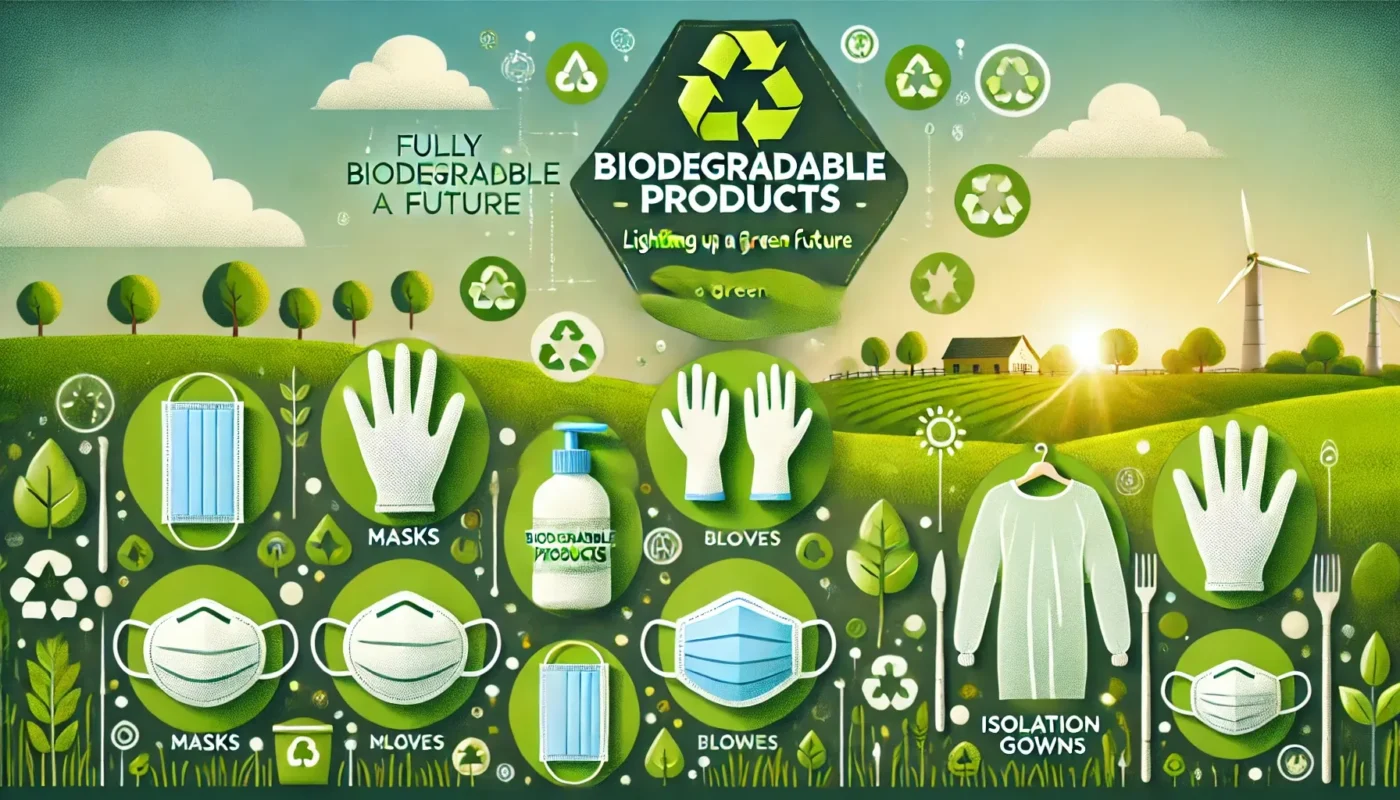**Plastic Pollution: A Global Concern**
**China's Commitment to Plastic Pollution Control**
**China's Vision for Plastic Management by 2025**
**Degradable Product Series**
**Degradable Masks**
**Degradable Gloves**
**Degradable Isolation Gowns**
**Fully Biodegradable Material Performance**
**PLA and PBAT Comparison:**
**Development of Degradable Fabrics**
**Fully Biodegradable Plastics**
**Nitrile Gloves Formation and Disposal Challenges**
**Achieving Biodegradation**
| **Degradation of Used Gloves** | 优点 | **Illustration of Biodegradable Products in a Sustainable Landscape** | 应用 |
|---|---|---|---|
| PLA | **New Trend | Fully Biodegradable Plastics Illuminate a Green Future - Experts in Recycling** | High processing equipment requirements, poor heat resistance, high brittleness, easy hydrolysis | Packaging, tableware, automotive electronics, medical |
| PBAT | Excellent processing performance, higher tear strength and impact strength than PE | Poor stiffness, requires professional modification | Shopping bags, packaging bags, agricultural films, garbage bags |
Development of Degradable Fabrics
Currently, materials used for protective products like protective clothing and shoe covers lack effective environmental friendliness. Damao has successfully developed a composite degradable fabric based on PLA nonwoven fabric and microporous breathable PBAT film. The fabric’s performance meets domestic and international standards, with a hydrostatic pressure of over 400 cm H2O and a moisture permeability of over 1000 g/(m2*d). The 90-day compost degradation rate can reach 94%.
**Hand Washing:** Fully biodegradable plastics
Design: PLA nonwoven fabric + PBAT breathable film
Features: High barrier (hydrostatic pressure ≥ 400 cm H2O) High moisture permeability (moisture permeability ≥ 1000 g/(m2*d)) Safe and comfortable performance Fully biodegradable 90-day biodegradation rate ≥ 90%
Biodegradable Nitrile Gloves
About Biodegradable Nitrile Gloves
Nitrile gloves are formed through high-temperature vulcanization. During vulcanization, the presence of vulcanization aids induces cross-linking between nitrile molecular chains, forming a highly stable cross-linked network structure. This cross-linked structure gives nitrile gloves excellent mechanical properties but also makes the disposal of used gloves difficult. Therefore, the development and production of biodegradable gloves are significant against this backdrop.
How Biodegradation is Achieved
Biodegradation of nitrile is primarily achieved by introducing biodegradable aids into the nitrile latex system. From a processing perspective, biodegradable aids need to have the following characteristics:
- Good dispersion in the latex system;
- Good heat resistance, able to withstand temperatures above 150℃;
- The introduction of degradable aids should not significantly affect the gloves’ performance.
How Used Gloves Degrade
Biodegradation is effective only in active soil. The mechanism involves burying used gloves in active soil where the biodegradable aids attract soil microorganisms. These microorganisms secrete enzymes that hydrolyze the molecular chains or cross-links, forming low-molecular-weight polymers. The microorganisms then absorb these low-molecular-weight substances and metabolize them into carbon dioxide and water, thus achieving the biodegradation of the gloves.

